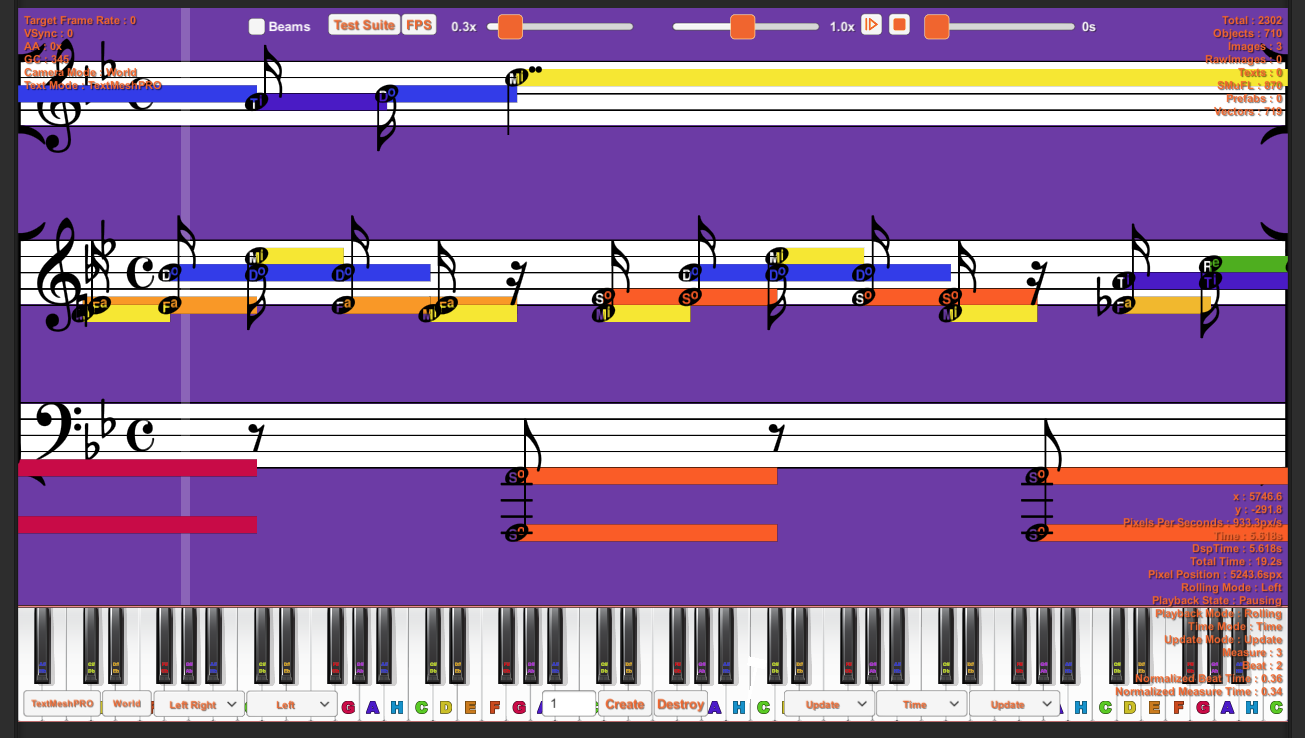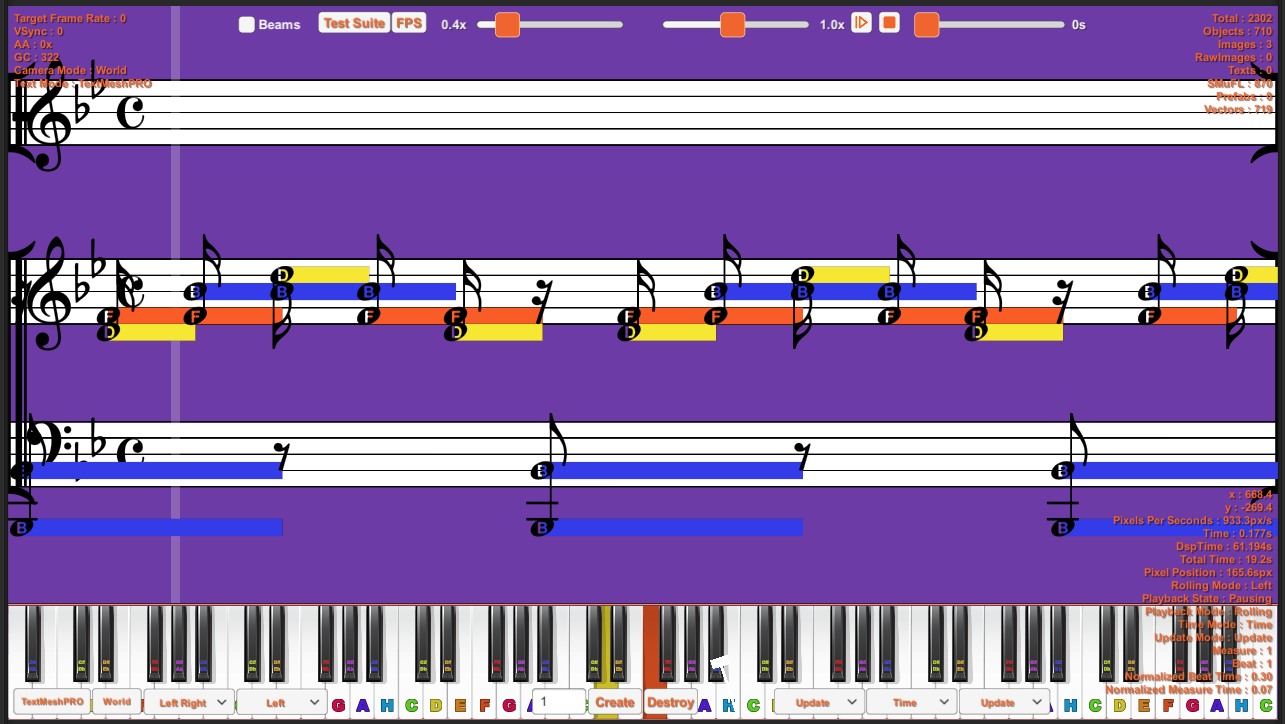- From: Marek Ledvina <ledvina.m@gmail.com>
- Date: Sat, 13 Jan 2018 16:10:31 +0700
- To: Joe Berkovitz <joe@noteflight.com>
- Cc: public-music-notation-contrib@w3.org
- Message-Id: <FDBC5909-935C-4CED-B78C-13DD19403D89@gmail.com>
I also noticed that nothe head with names and with solfege are a bit larger than normal note heads. Which causing issues in rendering stem alignment. See attachments. I feel like the size needs to be be unified otherwise developers have to resize programatically named and solfege noteheads. M. > On Jan 13, 2018, at 3:16 PM, Glenn Linderman <v+smufl@g.nevcal.com> wrote: > > On 1/12/2018 5:32 PM, Marek Ledvina wrote: >> Hello Joe, >> We are currently working on solfege exercises and found out that SMuFL is completely missing the chromatic solfege syllables “note heads" like you can find it for example here http://openmusictheory.com/chromaticSolfege.html >> Current Bravura only contains scale degrees ( 7 ) syllables ( do, re, mi, fa, sol, la, ti [si] ) which is nice start but not usable for teaching materials. >> We need “do, di, re, ri, mi, fa, fi, so(l), si, la, li, ti, (do)” and “do, ti, te, la, le so(l), se, fa, mi, me, re, ra do" >> Can I ask anyone to include them into SMuFL Bravura font? >> Thank you very much, Marek. > > > I've noticed the lack of solfege support in those noteheads also, when looking for characters for the very related topic of the various tonic sol-fa and numbered notations. While the simplest forms of tonic sol-fa were designed to be "typeset" by using a typewriter > > > | do re mi - | > > | 1 2 3 - | > > > other forms use a bit more complex notation. There is some information about numbered note systems in Wikipedia[1][2][3]. > > While even much of the more complex notations can be produced with various carriage movements on a typewriter, the development of proportional fonts, makes it harder to achieve proper overstriking for a consistent look using modern technology. Some of the fonts do a better job than others, and one, Doulos Cipher[4] from SIL, makes a good try at being pretty complete, but it uses graphite font technology, which has somewhat limited support. > > There are a fair number of variations in numbered note systems popularly used from place to place, with some special symbols not found in most fonts designed for orthography, making it somewhat hard to find an appropriate font for the numbered note systems. Wikipedia doesn't seem to delve into the regional differences between variations, nor does it include sufficient detail about any one of them to be confident of completeness of usage or rules in their articles. > > I have various samples of numbered notation used together with lyrics, and some include it between the staves of CWMN (using ordinary noteheads). Other samples show four-part harmony using do re mi, together with lyrics. But while samples of usage are great, and many of the usages can be figured out by examining those examples, it would be great to find a complete exposition of the rules for various variations. I'm presently going by some of what Wikipedia says, some by the various samples I have, and some by asking questions of people that use the notation (but they are not likely true experts on the notation). > > Because each note may have a cluster of other symbols around it, it seemed to be that the easiest way to achieve support in a variety of contexts and applications would be to custom design a font with the following characteristics: > > 1. The numbers are centered, and non-spacing. > 2. Various dots, double dots, overbars, underbars, and accidentals, and fermatas that are placed above, below, or to the left of the basic number should be positioned on the same alignment point, and also be non-spacing. > 3. Hyphens and dots that follow the notes could have the same alignment point for the first one, but then space over sufficiently that using them again would produce normally-spaced appearance. > 4. Additional "normal" characters might be included to allow creation of the various notations for specifying key signatures and time signatures. > > The above would suffice for a notation application. While I chose a centered alignment point, the techniques would work equally well for any other alignment point, as long as the relative positioning of the characters were appropriate to their use, and they were non-spacing. > > For use in a text application, each group of characters forming a note group would then be followed by an appropriate width space to "complete" the group, and maybe another one or two to reach an minimally spaced point to start another group, or, of course, even more spacing to reach parity with associated lyrics on a nearby line. > > It appears the Doulos Cipher font uses Graphite for combining characters (a more complex solution to character overlays than non-spacing, but perhaps more limited in total number of combined characters?), and to achieve some level of support for longer beams and slurs to also be positioned as "slur tips" with a note group, and in the appropriate software that includes Graphite, complete slurs would appear. > > Not finding support for numbered notation systems in SMuFL, and not finding any existing font that had sufficient documentation, character set, and quality for a current project, I described the above needs to a friend who cobbled together a font using characters from existing public domain sources, and repositioned their alignment points and widths to achieve the above characteristics. It works well in my notation application (under development, and mostly using SMuFL), together with the slur and beam drawing support in that application. I likely didn't find and include all the characters that might be needed for full support of various numbered notation systems, but I did include everything I needed for a current project, and a bit more for potentially similar projects. > > I didn't find any standard codepoints for such characters or uses, and fear that our font, if released to the public, will contribute to the music font mojibake that SMuFL is attempting to correct. Is there any support for the idea of including a range of characters for numbered notation systems within SMuFL? I'd be happy to adjust my current font and application to conform to such a range if it existed. I did currently pick a range high in the private use area that SMuFL is targeting, not currently used by SMuFL, but there may be reasons I'm unaware of that would make it not be the best range. There is some redundancy with some SMuFL characters, done to allow for them to be non-spacing, and have alignment points that make the spacing calculations for the numbered notation simple. > > > [1] https://en.wikipedia.org/wiki/Numbered_musical_notation > [2] https://en.wikipedia.org/wiki/Tonic_sol-fa > [3] https://en.wikipedia.org/wiki/Gamelan_notation > [4] http://scripts.sil.org/cms/scripts/page.php?site_id=nrsi&id=ciphermusic >
Attachments
- text/html attachment: stored
- image/png attachment: movable_solfege.png

- image/png attachment: tone_names.png

Received on Saturday, 13 January 2018 09:11:08 UTC